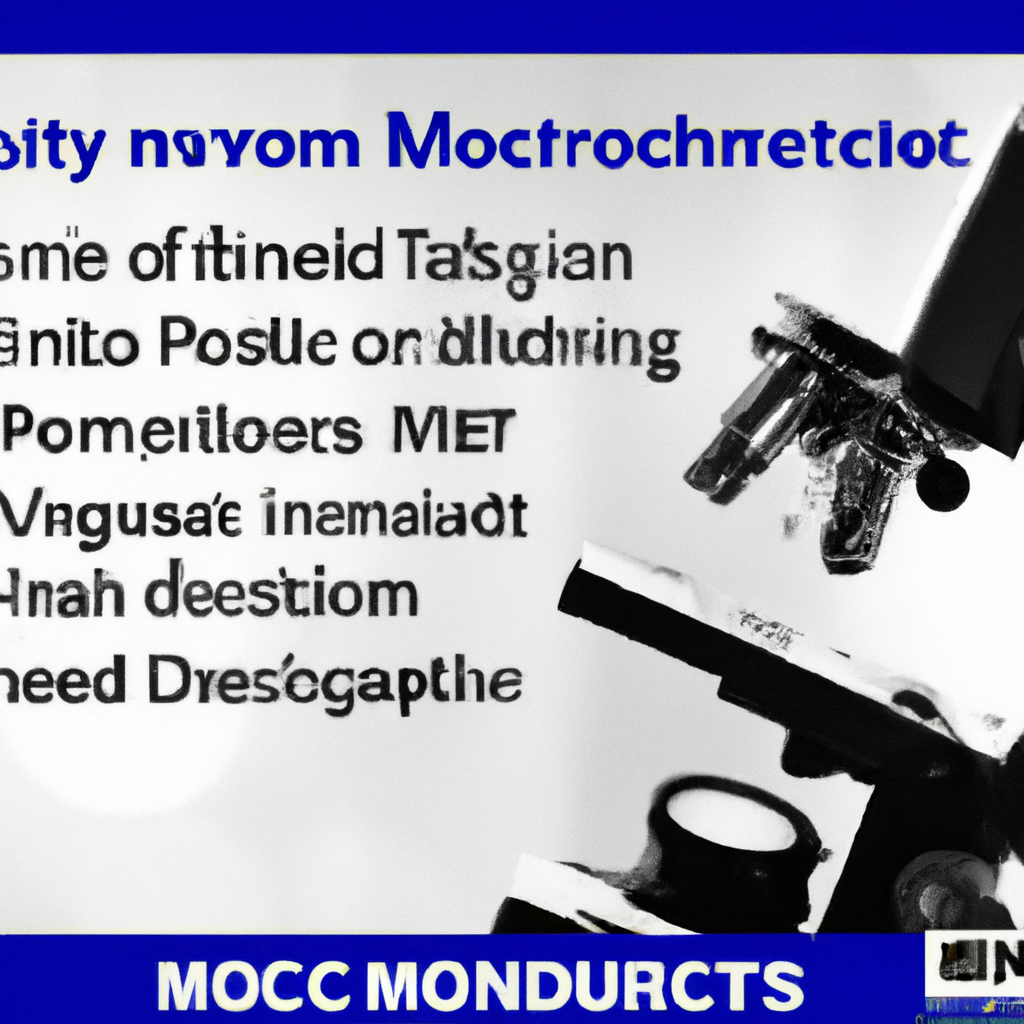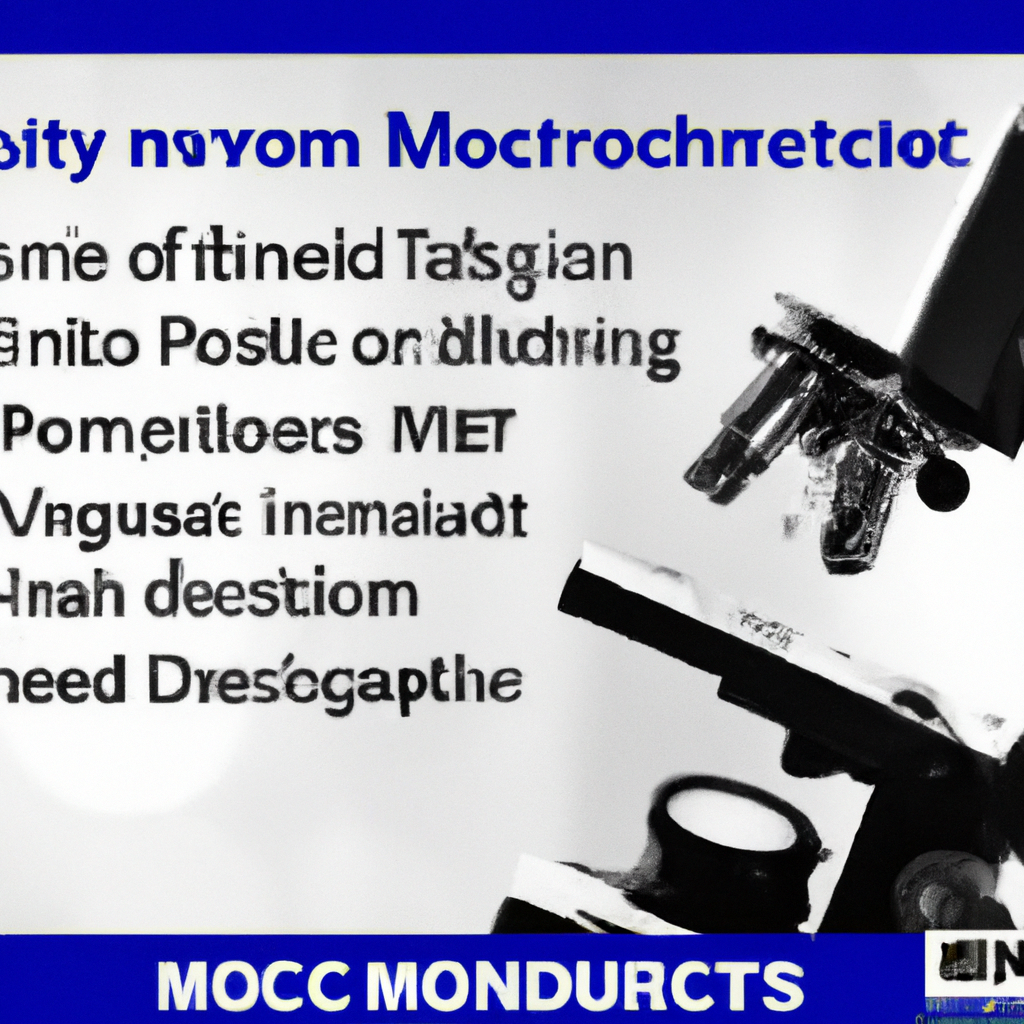So you’re curious about the advantages of using a digital microscope. Well, you’re in for a treat! Gone are the days of squinting through the eyepiece of a traditional microscope, because with a digital microscope, you can instantly see your samples come to life on a high-resolution screen. Not only does it offer a more comfortable viewing experience, but it also allows you to capture and store images and videos for later analysis or sharing. With adjustable magnification levels and built-in lighting, the digital microscope opens up a whole new world of exploration and discovery. Whether you are a student, a scientist, or simply an enthusiastic hobbyist, using a digital microscope will revolutionize the way you observe and document the microcosms around us.

Improved Image Quality
High-resolution images
With a digital microscope, you can expect high-resolution images that capture even the tiniest details of your subject. This level of clarity allows for better analysis and research, as you can observe and study intricate structures with enhanced precision.
Enhanced clarity and sharpness
The digital technology in these microscopes ensures that the images produced are sharp and clear. Say goodbye to the days of blurry or distorted images. With improved clarity, you can make accurate observations and draw reliable conclusions.
Improved color reproduction
Digital microscopes excel in reproducing colors accurately. This means that you can view your samples in their true colors, providing a more realistic representation of what you’re studying. The vibrancy and accuracy of the colors contribute to a more immersive and visually appealing experience.
Ease of Use
Simple and intuitive interface
Digital microscopes are designed with user-friendly interfaces in mind. Their simple and intuitive controls allow for easy navigation and adjustment of settings. You don’t need to be a technology expert to operate these microscopes effectively. They are designed to be accessible to users of all skill levels.
Easy adjustment of settings
Whether it’s changing the magnification level, altering the lighting conditions, or adjusting the focus, digital microscopes offer easy and hassle-free setting adjustments. These microscopes typically have user-friendly knobs, buttons, or touchscreens that enable you to make quick and precise changes to suit your specific needs.
Real-time image viewing
Gone are the days of patiently waiting for film to develop. With a digital microscope, you can view your images instantly and in real-time. This feature allows you to make immediate observations, examine samples more efficiently, and adjust settings on the fly to capture the best possible images.
Portability
Compact and lightweight design
Digital microscopes come in compact and lightweight designs, making them highly portable. Whether you need to conduct fieldwork or move between different laboratory setups, their size and weight make them easy to carry around. You can bring your digital microscope wherever you need it without the hassle of lugging around bulky equipment.
Easy to transport
In addition to their compact design, digital microscopes often come with protective cases or bags for safe and convenient transportation. This added feature ensures that your microscope remains secure during transit, eliminating the worry of potential damage. You can confidently transport your microscope to various locations without the fear of it getting scratched or broken.
Suitable for fieldwork
With their portability and durability, digital microscopes are highly suitable for fieldwork. Whether you’re researching plants, insects, or geological formations, you can take your microscope directly to the source. The ability to analyze samples on-site provides a significant advantage to researchers, as it allows for immediate analysis and reduces the risk of sample degradation.
Versatility
Ability to capture images and videos
Digital microscopes offer the capability to not only capture high-quality images but also record videos of your samples. This versatility allows you to document dynamic processes or movements that cannot be fully captured in still images alone. Whether it’s for educational purposes or scientific documentation, the ability to capture both images and videos expands your research options.
Compatibility with various devices
Digital microscopes are designed to be compatible with various devices. Whether you’re using a computer, tablet, or smartphone, you can easily connect your microscope and transfer your images and videos. This compatibility allows for seamless integration with your existing technology, enabling you to conveniently view, edit, and share your research across multiple platforms.
Flexible magnification options
One of the key advantages of digital microscopes is their ability to provide flexible magnification options. With a simple adjustment, you can zoom in or out to observe your samples at different levels of detail. This flexibility allows for a broader range of research applications, accommodating various specimen sizes and research requirements.

Digital Documentation
Digital storage and organization of images
Digital microscopes enable you to conveniently store and organize your images digitally. Gone are the days of physical archives and the potential for loss or damage. By storing your images in a digital format, you can easily access and retrieve them whenever needed. This digital documentation system enhances the efficiency of your research workflow and ensures the longevity of your valuable data.
Easy sharing and collaboration
Sharing your research findings and collaborating with colleagues or peers becomes effortless with digital microscopes. With the ability to connect and transfer data wirelessly, you can easily share your images, videos, and research notes with others. This promotes collaboration, facilitates knowledge exchange, and accelerates scientific discoveries through enhanced communication channels.
Ability to annotate and measure
Digital microscopes often come with software that allows you to annotate and measure your images. This feature enables you to mark specific areas of interest, add explanatory notes, or conduct precise measurements directly on the digital image. The ability to annotate and measure contributes to more accurate and detailed documentation, fostering comprehensive analysis and facilitating further research.
Improved Workflow
Faster and more efficient analysis
Digital microscopes streamline the research process by allowing for faster and more efficient analysis. With real-time image viewing, instant adjustments, and digital storage, you can analyze samples and acquire results without unnecessary delays. This improved workflow empowers researchers to make timely observations, draw accurate conclusions, and progress through their research more efficiently.
Automation features
Many digital microscopes come equipped with automation features that further enhance workflow efficiency. These features can include automated focusing, lighting adjustments, or image stitching capabilities. By automating repetitive tasks, researchers can allocate their time and energy to more critical aspects of their work, amplifying productivity and minimizing the likelihood of errors.
Integration with other software and equipment
Digital microscopes can seamlessly integrate with other software and equipment commonly used in research and analysis. This compatibility allows for a seamless workflow, as you can directly import and export data between different systems. Whether you’re using image analysis software, data visualization tools, or laboratory information management systems, the integration capabilities of digital microscopes ensure a cohesive research process.
Enhanced Connectivity
Wireless data transfer
Digital microscopes leverage wireless technology to enable seamless data transfer. Instead of relying on physical connections or manual data transfer, you can wirelessly transmit your images, videos, and research findings. This wireless connectivity eliminates the need for cables and ports, providing a hassle-free experience and enabling greater mobility during data exchange.
Remote access and control
Some digital microscopes offer remote access and control capabilities, allowing you to operate the microscope from a distance. This is particularly beneficial when working with sensitive or hazardous samples that require a controlled environment. Remote access ensures the safety of researchers while still enabling them to perform critical tasks without compromising accuracy or efficiency.
Collaborative research opportunities
Digital microscopes with enhanced connectivity open up opportunities for collaborative research. Researchers can conduct joint experiments, share live views of specimens, or remotely assist colleagues in their analysis. This level of collaboration transcends geographical boundaries and fosters interdisciplinary research, promoting the exchange of ideas and accelerating scientific progress.
Cost-Effectiveness
Elimination of film and chemical costs
By utilizing digital microscopes, researchers can eliminate the costs associated with traditional film and chemicals. Digital imaging eliminates the need for physical film development and processing, reducing expenses in the long run. Additionally, the ongoing costs of purchasing and maintaining chemicals for image development are eliminated, resulting in substantial cost savings for research institutions.
Reduced maintenance and repair expenses
Digital microscopes generally require less maintenance compared to traditional microscopes. They have fewer moving parts and do not rely on complex optics or delicate systems. This reduction in maintenance requirements translates to lower repair expenses and less downtime. Researchers can allocate their resources more efficiently, redirecting budget and time towards other research endeavors.
Long-term savings for research institutions
The cost-effectiveness of digital microscopes extends beyond immediate expenses. Over time, the adoption of digital microscopes leads to long-term savings for research institutions. These savings can be reinvested in additional equipment, research initiatives, or the development of advanced scientific methodologies. Ultimately, digital microscopes offer a financially sustainable approach to conducting research while optimizing resource allocation.
Eco-Friendly
Reduced use of harmful chemicals
Digital microscopes contribute to a more eco-friendly approach to research by reducing the reliance on harmful chemicals. Traditional microscopy often requires the use of chemicals for sample preparation and image development. By eliminating or minimizing the need for these chemicals, digital microscopes help minimize environmental impact and promote sustainable laboratory practices.
Lower energy consumption
Compared to traditional microscopy, digital microscopes generally have lower energy consumption. This not only saves costs but also contributes to a greener research environment. Lower energy consumption leads to reduced carbon emissions and a smaller ecological footprint. By embracing digital microscopes, researchers can actively participate in sustainable research practices and contribute to a more environmentally conscious scientific community.
Sustainable research practices
The adoption of digital microscopes aligns with the shift towards sustainable research practices. Through enhanced connectivity, digital documentation, and reduced resource consumption, researchers can achieve their scientific goals while minimizing their ecological impact. By embracing digital microscopes, researchers actively contribute to the preservation of the environment and the longevity of scientific exploration.
Advanced Features
Fluorescence imaging capabilities
Some digital microscopes offer fluorescence imaging capabilities, allowing researchers to visualize fluorescence-labeled specimens with ease. This feature enables the study of cellular structures, molecular interactions, and other fluorescence-related phenomena. The ability to capture and analyze fluorescence images expands the research possibilities and opens up new avenues for scientific exploration.
3D imaging and modeling
Digital microscopes can also generate 3D images and models of specimens, offering a more comprehensive understanding of their structure and spatial relationships. By capturing multiple images from different angles, researchers can create accurate 3D representations. This feature proves invaluable in fields such as anatomical research, material science, and archaeology where 3D visualization enhances analysis and facilitates knowledge discovery.
Image stitching for larger samples
Digital microscopes often come equipped with image stitching capabilities, allowing for the seamless combination of multiple images into a single, larger image. This feature is particularly useful for samples that are larger than the microscope’s field of view. By stitching together multiple images, researchers can create a comprehensive view of the entire sample, enabling detailed analysis and facilitating a more holistic understanding of complex structures.
In conclusion, digital microscopes offer numerous advantages that enhance research capabilities and streamline the scientific process. From improved image quality to advanced features, these microscopes provide researchers with powerful tools to observe, document, and analyze the microscopic world. The ease of use, portability, and cost-effectiveness of digital microscopes contribute to increased efficiency, reduced environmental impact, and enhanced collaboration within the scientific community. By embracing digital microscopy, researchers can uncover new insights, make breakthrough discoveries, and propel scientific advancements across various fields.




